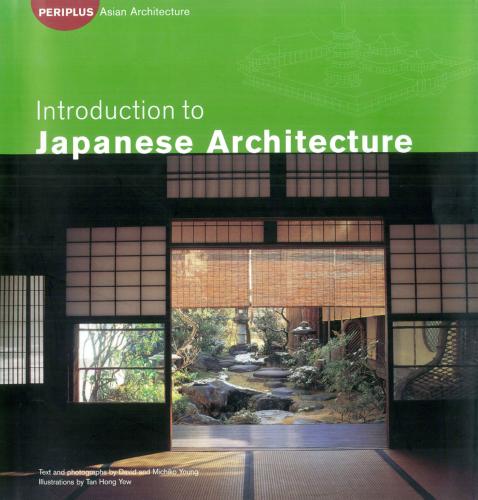Development of Traditional Architecture
Japanese traditional architecture can be organized into several major genealogical groups on the basis of historical origins and stylistic influences. The most important group is composed primarily of palace, residential, and teahouse styles originating in prehistoric raised structures. Other major groups are commoner residences that evolved from prehistoric pit structures, Buddhist temples, Shinto shrines, theaters, and castles. The diagram below has been simplified to emphasize major trends.
Lookout tower at Yoshinogari, reconstructed Yayoi village.
Tōgudō at Ginkakuji Temple, Kyoto.
HISTORICAL PERIODS
JŌMON
10000-300 BCE
YAYOI
300 BCE—300 CE
TOMB MOUND
300-710 (overlaps with later periods)
ASUKA
538-645
HAKUHŌ
645-710
NARA
710-794
HEIAN
794-1185
KAMAKURA
1185-1333
MUROMACHI
1333-1573
MOMOYAMA
1573-1600
EDO
1600-1868
TEXT SECTIONS
PRE-BUDDHIST CULTURES
Yasaka Shrine, Kyoto.
Tōdaiji Temple, Nara.
Basic Principles of Japanese Architecture
Many architectural styles have developed over the course of Japan's long history. Nevertheless, there are several basic principles that can be found in the interesting but complex story told in the following pages. Some of these basic principles describe how core values have influenced the choice of building materials, techniques, and designs. Other principles emphasize cultural processes such as the relation between restraint and exuberance and a passion for preserving the past.
The Japanese love of wood is illustrated in the Zenshitsu Hall at Gangōji Temple in Nara City.
Preference for Natural Materials and Settings
Traditional Japanese architecture is characterized by a preference for natural materials, in particular wood. Since wood can breathe, it is suitable for the Japanese climate. Wood absorbs humidity in the wet months and releases moisture when the air is dry. With proper care and periodic repairs, traditional post-and-beam structures can last as long as 1,000 years. Other natural building materials are reeds, bark, and clay used for roofing, and stones used for supporting pillars, surfacing building platforms, and holding down board roofs. Associated with the use of natural materials is a preference for straight lines, asymmetry, simplicity of design, and understatement, exemplified by pre-Buddhist Shinto shrines, farmhouses, teahouses, and tasteful contemporary interiors.
There is also a preference for natural settings. After Buddhism was introduced from the continent, it was not long before the symmetry of Chinese temple compounds gave way to mountain temples with an asymmetrical layout.
The wood carving on the bottom of the door, as well as the metal-work which graces an adjacent pillar, both part of a gate at Higashi Honganji Temple in Kyoto, illustrate the attention to detail that is typical of many traditional buildings.
Restraint and Exuberance
There is, however, another side to Japanese culture that is not as well known—the appreciation of exuberant colors and complexity of form—in contrast to the restrained tradition with its simplicity and asymmetry. This is exemplified by Chinese style shrines and temples and the mausoleums at Nikkō. Such buildings are characterized by a strong contrast between vermilion posts and white plastered walls, elaborate decorations, curved lines, symmetry, and the imposition of order upon nature. Both the restrained and exuberant traditions are favored at different times and places, depending upon the occasion. For example, ceremonial buildings are designed to impress and thus tend to be more exuberant than residential architecture, where the goal is to provide a tasteful and relaxed atmosphere.
Attention to Detail
Regardless of whether circumstances call for restraint or exuberance, Japanese architects, builders, artists, and craftspeople pay a great deal of attention to detail. Even when the overall effect of a building is simple, particularly when it is viewed from a distance, a close-up inspection of the building often reveals numerous details that add interest. Attention to detail applies to both technological and design features. For example, at the technological level, the intricate joinery of a traditional building allowed it to be assembled without nails and to be disassembled periodically for repairs. At the design level, the interlocking eave supports of a Buddhist temple can be quite complicated. The basic pattern of the brackets, however, is repeated over and over again to create a visual rhythm that is well integrated and unified.
Twice destroyed by fire, the Daibutsuden (Great Hall) of Tōdaiji Temple in Nara is significantly smaller than the original. Still the largest wooden building in the world
